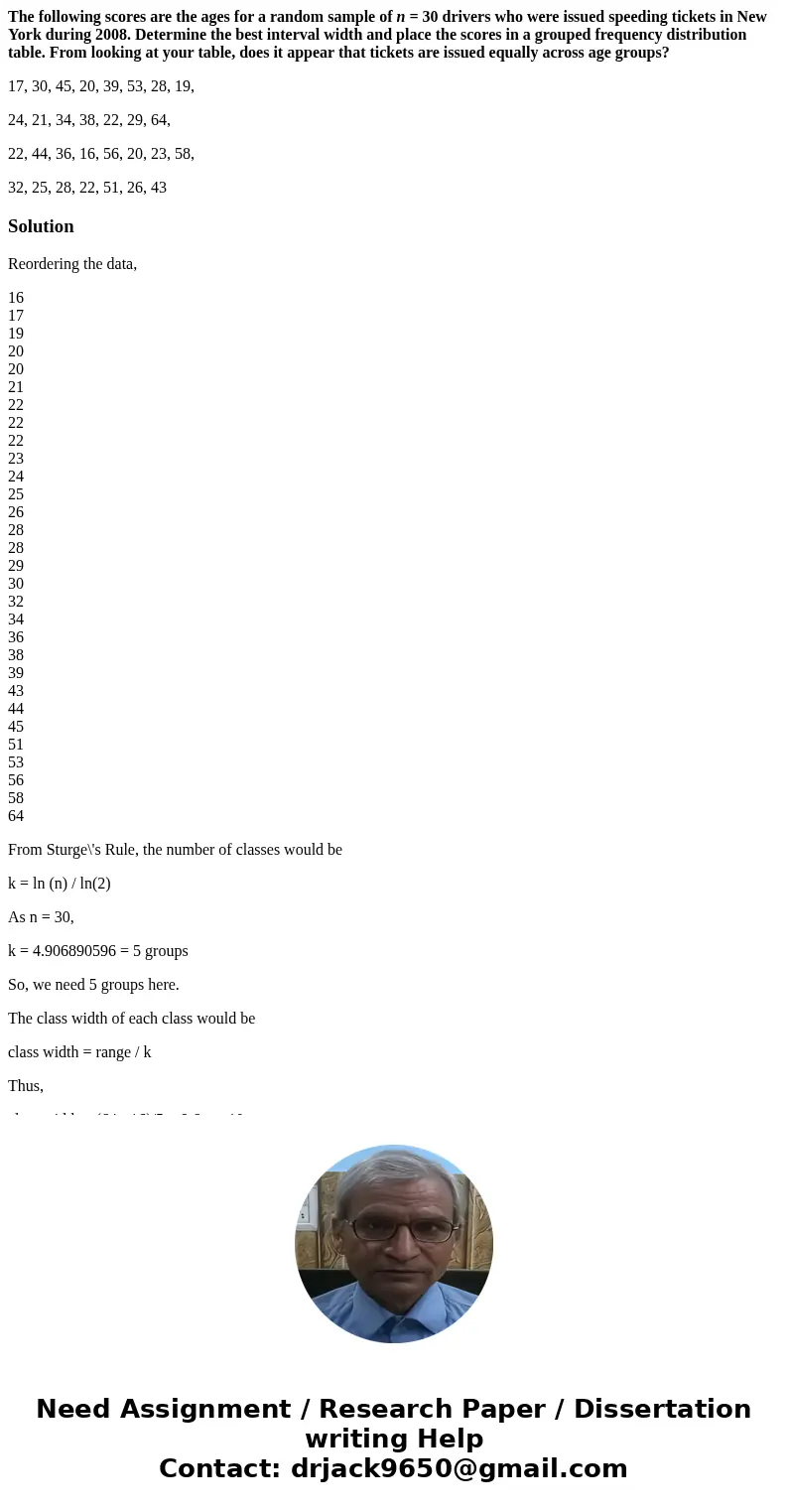The following scores are the ages for a random sample of n
The following scores are the ages for a random sample of n = 30 drivers who were issued speeding tickets in New York during 2008. Determine the best interval width and place the scores in a grouped frequency distribution table. From looking at your table, does it appear that tickets are issued equally across age groups?
17, 30, 45, 20, 39, 53, 28, 19,
24, 21, 34, 38, 22, 29, 64,
22, 44, 36, 16, 56, 20, 23, 58,
32, 25, 28, 22, 51, 26, 43
Solution
Reordering the data,
16
17
19
20
20
21
22
22
22
23
24
25
26
28
28
29
30
32
34
36
38
39
43
44
45
51
53
56
58
64
From Sturge\'s Rule, the number of classes would be
k = ln (n) / ln(2)
As n = 30,
k = 4.906890596 = 5 groups
So, we need 5 groups here.
The class width of each class would be
class width = range / k
Thus,
class width = (64 - 16)/5 = 9.6 --> 10
So we do 5 classes of width 10.
We start with 15.
Class Frequency
15-24 11
25-34 8
35-44 5
45-54 3
55-64 3
From this table, it seems that the tickets are not equal distributed between age groups. It looks skewed to the right here. [ANSWER]


 Homework Sourse
Homework Sourse